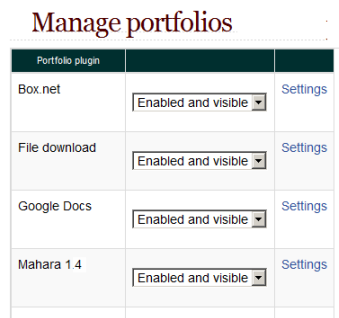Applying for scholarships can be a daunting process, but with effective scholarship portfolio management, you can streamline the application process and increase your chances of securing funding for your education. A well-managed scholarship portfolio allows you to keep track of opportunities, deadlines, requirements, and your achievements, ensuring that you present a compelling and comprehensive application to scholarship committees. In this article, we will explore the importance of managing your scholarship portfolio effectively and provide practical tips for maximizing your scholarship success.

Understanding Scholarship Portfolio Management
Scholarship portfolio management involves organizing and maintaining a collection of essential documents, achievements, and experiences to support your scholarship applications. It includes setting clear goals and objectives, tracking opportunities, showcasing your strengths, and effectively presenting your qualifications to scholarship committees.
Importance of a Well-Managed Scholarship Portfolio
A well-managed scholarship portfolio plays a crucial role in simplifying the application process and presenting a strong case for receiving scholarships. Here’s why it is essential:
1. Setting Clear Goals and Objectives
By defining your academic and career goals, you can tailor your scholarship search and applications to align with your aspirations. Setting clear objectives allows you to focus on scholarships that are most relevant to your field of study or interests.
2. Organizing and Documenting Scholarship Opportunities
Create a system for organizing scholarship opportunities, whether it’s a physical or digital folder. Keep track of application deadlines, requirements, and any additional materials needed. This organization ensures you stay on top of your applications and never miss an opportunity.
3. Tracking Deadlines and Requirements
Timeliness is crucial in scholarship applications. Maintain a calendar or spreadsheet to track important deadlines and ensure you submit your applications well before the closing dates. Be mindful of any additional requirements, such as essays, recommendation letters, or transcripts.
4. Highlighting Achievements and Experiences
Your scholarship portfolio should include a comprehensive list of your achievements, awards, extracurricular activities, and community involvement. These accomplishments provide evidence of your dedication, leadership abilities, and commitment to personal growth.
5. Showcasing Academic Excellence
Include transcripts, test scores, and certificates that highlight your academic achievements. Scholarship committees often prioritize academic excellence, so showcasing your strong academic performance is crucial.
6. Demonstrating Leadership and Community Involvement
Scholarship committees appreciate candidates who have demonstrated leadership and actively contributed to their communities. Document your participation in clubs, organizations, volunteer work, or leadership roles, emphasizing the impact you have made.
7. Writing Effective Scholarship Essays
Crafting compelling scholarship essays is vital to stand out from the competition. Your portfolio should include well-written essays that effectively communicate your story, aspirations, and how receiving the scholarship will help you achieve your goals.
8. Securing Strong Recommendation Letters
Maintain a collection of recommendation letters from teachers, mentors, or employers who can vouch for your abilities, character, and potential. These letters provide valuable insights into your qualifications and serve as endorsements to support your scholarship applications.
9. Creating a Professional Online Presence
In today’s digital age, having a professional online presence is crucial. Ensure your social media profiles portray a positive image, and consider creating a personal website or LinkedIn profile to showcase your achievements, experiences, and skills.
10. Exploring Additional Funding Sources
In addition to scholarships, explore other funding sources such as grants, fellowships, or financial aid programs. Include relevant information and deadlines for these opportunities in your scholarship portfolio.
11. Managing Scholarship Applications and Follow-ups
Keep track of submitted applications and their status. Follow up with scholarship committees to confirm receipt of your application and inquire about any further steps or updates.
12. Reviewing and Updating the Portfolio
Regularly review and update your scholarship portfolio. Add new achievements, experiences, or awards as they arise. Continuously refine your essays and personal statements to ensure they align with your current goals and aspirations.
Conclusion
Effective scholarship portfolio management is crucial for maximizing your chances of securing scholarships. By setting clear goals, organizing scholarship opportunities, tracking deadlines, highlighting achievements, and maintaining a professional online presence, you can present a strong and compelling application to scholarship committees. Remember to regularly review and update your portfolio to reflect your ongoing accomplishments and aspirations. With a well-managed scholarship portfolio, you can navigate the scholarship application process with confidence and increase your chances of obtaining the financial support you need to pursue your educational goals.
FAQs
1. How do I organize my scholarship portfolio effectively?
Organize your scholarship portfolio by creating a system to track opportunities, deadlines, and requirements. Use folders, calendars, or spreadsheets to stay organized and ensure you don’t miss any deadlines.
2. What should I include in my scholarship portfolio?
Include your achievements, awards, academic transcripts, recommendation letters, well-crafted essays, and evidence of leadership and community involvement. Also, consider maintaining a professional online presence.
3. How can I improve my scholarship essays?
To improve your scholarship essays, craft compelling stories, be authentic, and clearly articulate your goals and aspirations. Seek feedback from trusted mentors or teachers to refine your essays further.
4. How important is a professional online presence for scholarship applications?
A professional online presence can positively impact your scholarship applications. Ensure your social media profiles project a positive image, and consider creating a personal website or LinkedIn profile to showcase your accomplishments and skills.
5. Should I review and update my scholarship portfolio regularly?
Yes, it is essential to review and update your scholarship portfolio regularly. Add new achievements, update essays, and refine your goals as needed. Keeping your portfolio up to date ensures you present the most accurate and compelling information to scholarship committees.
 Scholarship Tip – Recipeholic.com help you find the best scholarship tis & program
Scholarship Tip – Recipeholic.com help you find the best scholarship tis & program